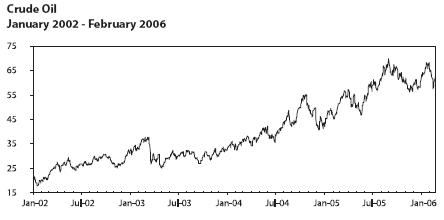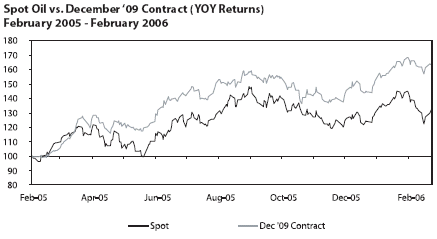St. LOUIS (ResourceInvestor.com) -- Donald Coxe, global portfolio strategist of BMO Financial Group, and veteran resource analyst, gave a compelling speech on the outlook of commodities yesterday at the 15th annual BMO Nesbitt Burns Global Resources Conference in Tampa, Florida. In a presentation entitled, “The Next Stage of the Bull Market for Mining Stocks,” Coxe told a story of where we’ve been, where we are and where we are going.
“Everyone was extremely cautious in 2002 after 21 years of decline in commodity stocks,” and many still are, he said, adding that this is a good thing.
In a speech that lasted nearly an hour, Coxe said that in order to understand what the future holds for commodities we must first examine the past and present. He reiterated his theory on ‘triple waterfalls,’ spoke about supply and demand and ultimately explained why new money should go into commodity stocks. So without further ado, let’s begin with where we’ve been.
Where We’ve Been
In 1980, mines and oils had 45% weight in the S&P 500, and “this was the peak,” Coxe said. In 2001, commodity stocks accounted for only 4.25% weight in the S&P, and “that is a true triple waterfall,” he added.
Many technical analysts refer to a technology boom and subsequent bust as a ‘triple waterfall,’ which constitute extraordinary events that occur very infrequently.
When the boom and bust pattern appears, it creates a financial pandemic that takes decades to correct, according to Coxe. We have only seen six previous triple waterfalls in the U.S. – including the boom and crashes in the gold, oil and silver markets in the 1970s and early 1980s.
“Triple water falls are so devastating that they don’t even just smash the asset value, but smash the psyche of people who are in the industry and those who follow the industry,” he said. “And it takes a long time rebuilding.”
Commodities are now emerging from a triple waterfall. Oils and mines are up to 10% in the S&P and “it’s only the beginning,” he said.
According to Coxe, each asset class that does best and worst in the first five years of a decade has the same performance in the next five years. See table below.
|
The Best and Worst
Performing Stocks: 1970-2005 |
||
|
Years |
Best |
Worst |
|
1970-1975 |
Commodities |
Long-term bonds |
|
1975-1980 |
Commodities |
Long-term bonds |
|
1980-1985 |
Long-term bonds, financial stocks, consumers stocks,
Japanese stocks |
Commodities |
|
1985-1990 |
Long-term bonds, financial stocks, consumers stocks,
Japanese stocks |
Commodities |
|
1990-1995 |
Technology stocks |
Japanese stocks, commodities |
|
1995-2000 |
Technology stocks |
Japanese stocks, commodities |
|
2000-2005 |
Commodities |
Technology stocks |
“It will be this way through the second five years,” said Coxe.
While the S&P is only at 10% weight of total oils and mines, only 0.4% make up mining stocks alone. This will change once the market fully wakes up, said Coxe, adding “we are still a minority.”
“Don’t be carried away with the weight of the TSX at
35%, because Canada is not the world, it isn’t even the best hockey
team,” Coxe joked. Where We Are In recent years, oil companies have moved away from
heavy hedging, while many mining companies have stuck with it, said
Coxe. “For 14 straight quarters, Wall Street experts
predicted falling oil prices…and they still have jobs,” he joked. In 2004, FAS Rule 133 began to impose a financial
penalty on commodity producers who hedged heavily. Under this rule,
hedging contracts are treated, for accounting purposes, as derivatives,
and must be marked to market in each accounting period. That rule hit
oil producers hard, said Coxe, and most companies who file with the
Securities and Exchange Commission cut back on their forward sales. This is going to be one of the catalysts to the
continuation of the bull market when more mining companies move away
from hedging as well, according to Coxe. In the quarterly “Global
Hedge Book Analysis,”
which measures the rate of de-hedging in mining companies, GFMS
reported that de-hedging reached its lowest level in more than two
years with a modest 0.49 million ounces cut by miners in the three
months to December 2005. What this means, is that many miners still need to
dehedge and it certainly won’t happen overnight. Therefore, Coxe next
changed his focus to the supply/demand story. “This bull market so far has been driven by demand
exceeding supply and its been driven by the fact that people failed to
anticipate the amount of demand,” Coxe simply put. And people seriously underestimated China’s demand,
he said. “Who could believe numbers like 10% economic growth
a year?” Coxe jokingly asked. “Once a year we’ve had brilliant
forecasters say, ‘ah ha! It won’t last’.” Furthermore, the fact still remains that not all
brokers are up to speed on commodities yet, which means that it’s not
too late for investors to take advantage, according to Coxe. Coxe said he went to 16 large brokerage institutions
in Manhattan recently to discuss the market and only three knew
anything about Alberta oil sands stocks. “The single best mineral resource in the world is
Alberta oil sands,” Coxe said. “Where are the majors going to go to
replace reserves?” One institution didn’t even know of Inco [NYSE:N; TSX:N], the no. 2 nickel
producer in the world, he said. “These stocks have been struggling for 20 years,”
and this is exactly why these institutions don’t know much about
commodities…yet, said Coxe. “What we need is something to make the next five
years work,” he added, bringing us to where we’re going. Where We’re Going “I am predicting that the second stage of the mining
bull market will be that we switch from the demand side of the story,
as being a mistake, to the supply story,” Coxe began. It’s been the case of commodities forever, he
explained. The price goes up, new production comes online, the price
goes down. “Call me in three years,” he said. “Cause some
things have happened.” According to Coxe, it
used to take about five years
to bring a mine online after drilling out the ore body. Now it takes
eight to ten years because of stricter environmental
regulations. And
with conflicts now appearing in countries like Indonesia and the
Philippines, the process of permitting new mines is going to be harder
and take longer, he said. “We’re not going to have the knee-jerk” on commodity
prices like before, said Coxe. Furthermore, the industry is undercapitalized and
now run by shareholder value, he added. And what do shareholders say?
‘Show me the money!’ So in order to maintain value for shareholders while
new mines are being developed, companies are going to consolidate,
which is what we’ve been seeing in 2004 and 2005. Conclusion “We live in something the future historians will
describe as the greatest simultaneous effervescence of personal
economic liberty since man appeared on the planet,” Coxe said, summing
up. In the next five years, buying forward will slow and
this will change the futures curve. This has changed in oil, and it
will change in mining stocks as well in the coming years, he said. “It just takes a perception change about the nature
of the industry itself,” added Coxe. Demand is going to grow but people are going to be
terrified about supply, he said. “We all collectively have a great opportunity,” he
concluded.

